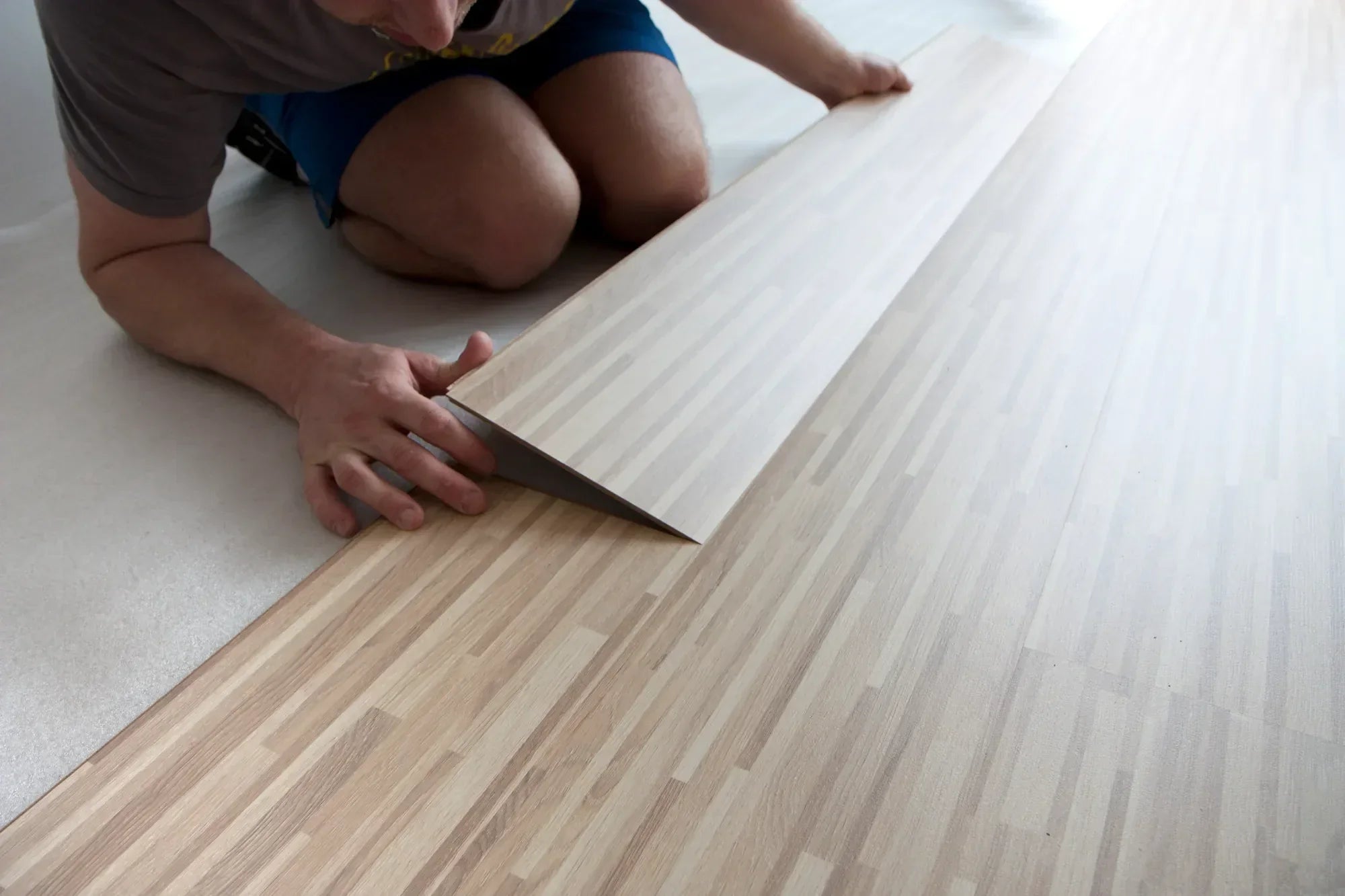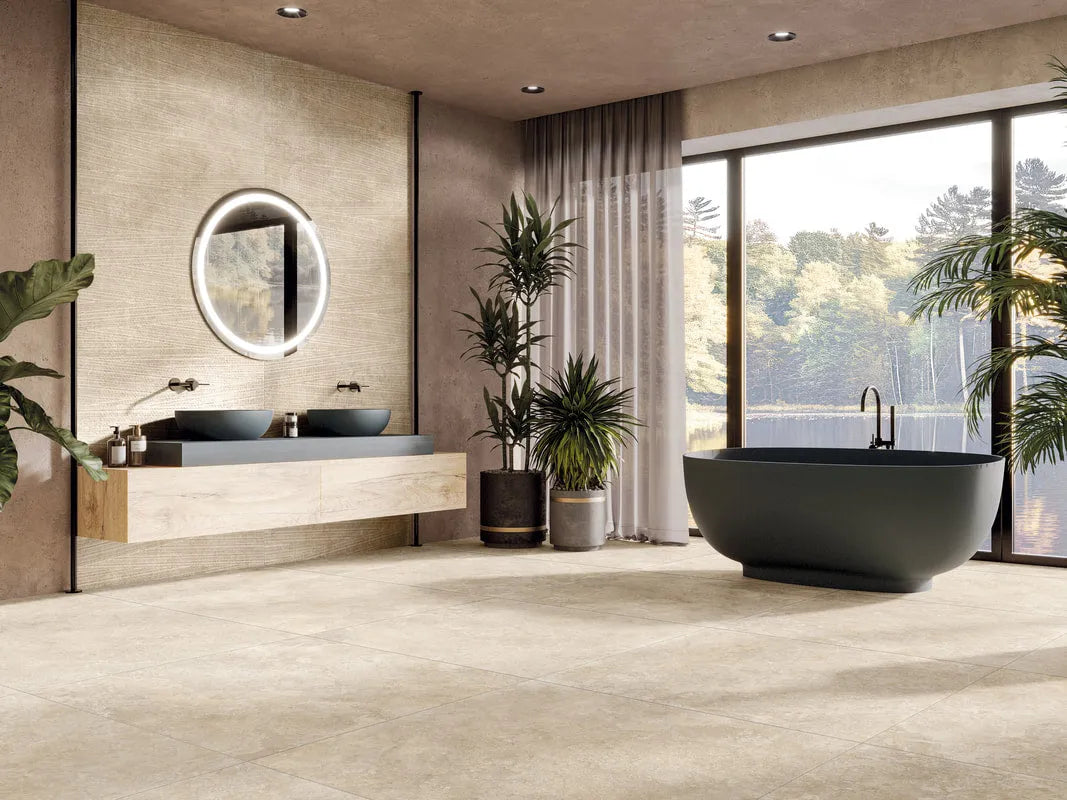What is the real difference between a floating laminate floor, a floating floor, and a laminate floor? If you're asking yourself this question, you're not alone. These terms often come up in discussions about flooring, but they're frequently confused.
Laminate, floating, and laminate may sound like the same thing, but they actually refer to very different concepts. Confusing the two can easily lead to the wrong choice. Some people think floating is a type of flooring, while others think laminate and laminate are opposites. These terms actually refer to specific materials, installation methods, or technical specifications.
This guide aims to clarify these concepts. You'll discover what floating laminate flooring is, how it compares to other similar flooring options, and what criteria to consider when choosing the right product for your project.
What is floating laminate?
Floating laminate is a multi-layer flooring designed to provide the appearance of wood or stone at a more affordable price than hardwood. It consists, from top to bottom, of a wear layer, a decorative layer, an HDF core, and a counterbalance layer.
Summary
- Introduction
- What is floating laminate?
- Floating laminate flooring demystified
- Why the term floating is confusing
- Quick comparison: laminate, vinyl, engineered wood, linoleum
- What you need to know to avoid unpleasant surprises
- Conclusion
- FAQ

-
A wear layer , made of aluminum oxide-reinforced melamine resin, which protects the surface against scratches, moisture and discoloration.
-
A decorative layer , printed in high resolution, which visually imitates wood, stone or other textures.
-
A central core made of high-density wood fibers (HDF – High-Density Fiberboard) , which ensures the strength and stability of the floor.
-
A counterbalancing layer , glued under the panel, which stabilizes the blade and prevents deformations linked to humidity.
This type of flooring is installed in a floating installation: the planks fit together using a click system, without glue or nails, and rest directly on a subfloor.
Floating laminate flooring demystified
Often chosen for its sleek appearance and affordable price, floating laminate flooring is a popular option in residential projects. Choosing the right flooring requires first understanding how it's made, which rooms it's best suited for, and what applications it's best suited for. This section explains its features, strengths, and limitations.
What it is made of
Floating laminate flooring consists of four layers. The first is a resin wear layer that protects against scratches, dents, and fading. Beneath it is a printed image that mimics the look of wood or other materials. The core of the flooring is made of high -density fiberboard (HDF), which gives it strength. Finally, a stabilizing layer supports the entire floor and helps prevent warping.
Its advantages and limitations
Floating laminate flooring is popular for its realistic appearance, affordable price, and ease of installation. It offers a good compromise for dry areas of the home such as bedrooms, living rooms, or offices. However, it does not tolerate moisture and water damage well. It is therefore less suitable for basements, bathrooms, or entryways exposed to water and salt in winter. However, floating laminate floors with a water-repellent HDF core have become available in recent months, which address this weakness.
Why the term floating is confusing
In everyday language, we often hear talk of floating floors as if they were a type of flooring. In reality, floating simply describes the way the floor is installed. This installation method applies to several very different materials. This makes the term vague and often misleading for consumers.
A method of installation, not a material
A floating floor is simply a floor that isn't glued or nailed to the subfloor. The slats click together, keeping them in place. This refers to an installation method, not a specific material.
Examples of floors that can be laid floating
Laminate flooring

Made of compressed wood fiber (HDF) with a decorative layer. It mimics wood or stone at low cost. It is the most common floating floor.
Click vinyl (SPC or flexible PVC)
100% synthetic, waterproof, and stable flooring. Ideal for damp rooms such as kitchens, bathrooms, or basements.
Made from a thin layer of real wood on plywood or HDF. Some models are installed floating, others require glue.
A natural product made from linseed oil, wood flour, and jute. Some modern formats can be installed floating, while still offering good durability.
Floating cork flooring
Soft and comfortable, it reduces noise and impact. It is suitable for dry spaces such as bedrooms or offices, but requires more care.
SPC or WPC composites
A hybrid of plastic and stone or wood. Water-resistant, rigid, and durable, they are ideal for high-traffic areas.
The limits of the term floating floor
The term floating flooring is often used as if it refers to a specific type of flooring. In reality, it says nothing about the nature of the material. For example, the words laminate and laminate generally refer to the same product: a multi-layer flooring installed without glue or nails, consisting of a wood fiber core and a decorative image. This shorthand can be misleading, especially when comparing products. To make the right choice, always check the material: laminate, vinyl, engineered wood, or other.
Quick comparison: laminate, vinyl, engineered wood, linoleum
All of these floors can be installed as floating floors, but they vary greatly in their composition, performance, and price. This comparison helps you understand the strengths and limitations of each, so you can choose the one that best suits your project.
Comparison table of floating floors
|
Floor type |
Main composition |
Water resistance |
Appearance |
Comfort |
Average price |
|---|---|---|---|---|---|
|
Laminate (laminate) |
HDF + decorative image |
Low (unless water repellent) |
Good wood imitation |
Quite rigid |
$ |
|
Click vinyl (SPC) |
Rigid or flexible PVC |
Excellent |
Variable, realistic |
Soft and stable |
$$ |
|
Engineered wood |
Real wood + plywood |
Weak |
Authentic |
Warm |
$$$ |
|
Click linoleum |
Natural materials (linseed oil) |
Average |
Matte and organic |
Flexible |
$$ |
|
Floating cork |
Natural cork + underlay |
Average |
Original |
Very comfortable |
$$ |
|
SPC/WPC composite |
Stone-plastic or wood-plastic |
Very good |
Very stable |
Farm |
$$-$$$ |
What you need to know to avoid unpleasant surprises

Not all floating floors are created equal. The term "floating" describes a method of installation, but it doesn't guarantee the quality or durability of the product. Making the right choice requires looking beyond labels and asking the right questions, especially in-store.
Common mistakes in supermarkets
In many stores, the term laminate flooring is used loosely. It often groups together different products without specifying their composition or limitations. Salespeople also sometimes fail to distinguish between laminate, vinyl, and engineered wood. This vagueness can lead to choosing a flooring that is ill-suited to the intended use.
The right questions to ask in store
Before purchasing a floating floor, always ask about the exact material: laminate, vinyl, engineered wood, or other. Also check if it's water-resistant, compatible with the intended room, and covered by a warranty. Ask about the thickness, core type, installation system, and maintenance precautions. These details make all the difference between a lasting purchase and disappointment.
Conclusion
Not all floating floors are created equal. Laminate, vinyl, engineered wood, and linoleum each have their own unique characteristics. It's not the installation method that determines quality, but the material chosen.
Do you have a project in mind? Request a free quote or come meet with an advisor at Emard Couvre-Planchers to explore the best products for your needs.
FAQ
What is the difference between a floating floor and a laminate floor?
A floating floor refers to an installation method, not a material. Laminate flooring, on the other hand, is a type of flooring often installed as a floating floor. In short, a laminate floor can be floating, but not all floating floors are laminate.
Are all floating floors laminate?
No. Click vinyl, engineered wood, and even some linoleums can also be installed floating. These are different materials, with varying performance and price points.
What is the most water resistant floating floor?
Click vinyl is the most water-resistant floating flooring. It's well-suited for basements, kitchens, and bathrooms. Laminate, on the other hand, doesn't tolerate prolonged moisture well unless its HDF core is water-repellent.
Laminate or vinyl flooring: which one to choose for a basement?
For a basement, vinyl is generally preferable. It is more resistant to moisture, temperature fluctuations, and water leaks. Laminate can be suitable if the environment is dry and stable.



